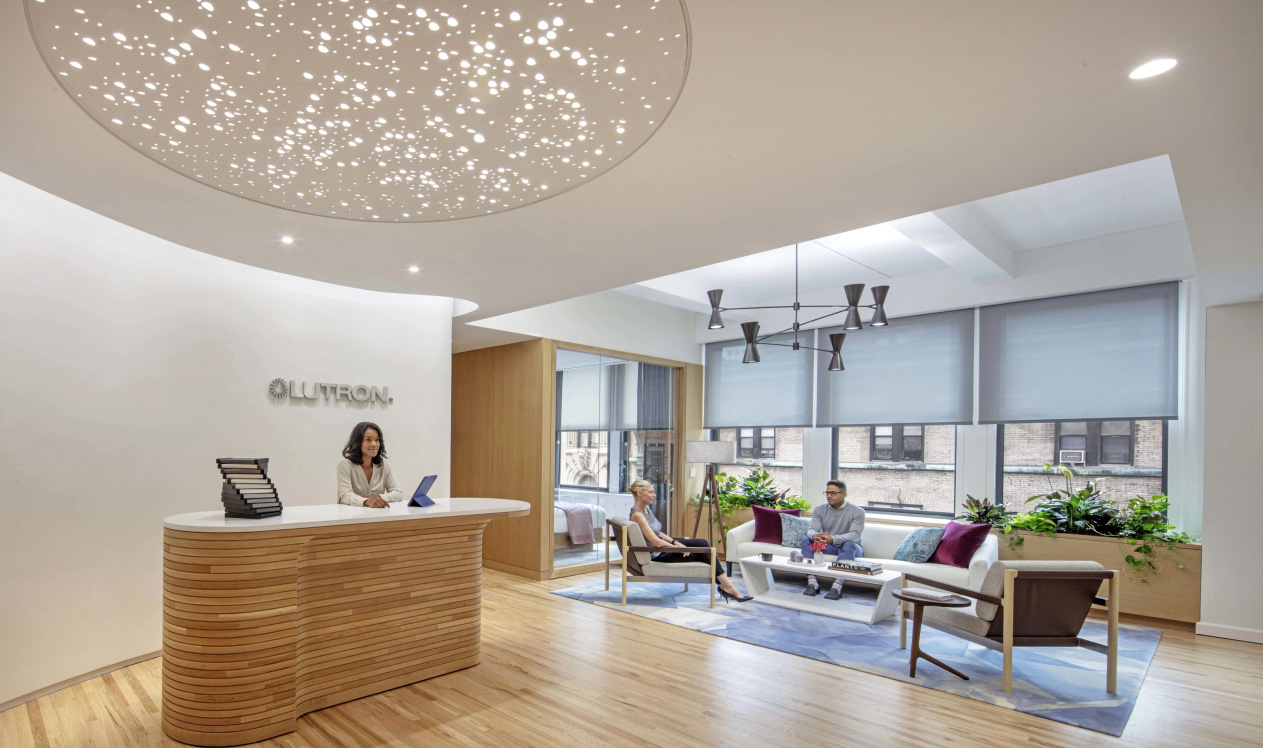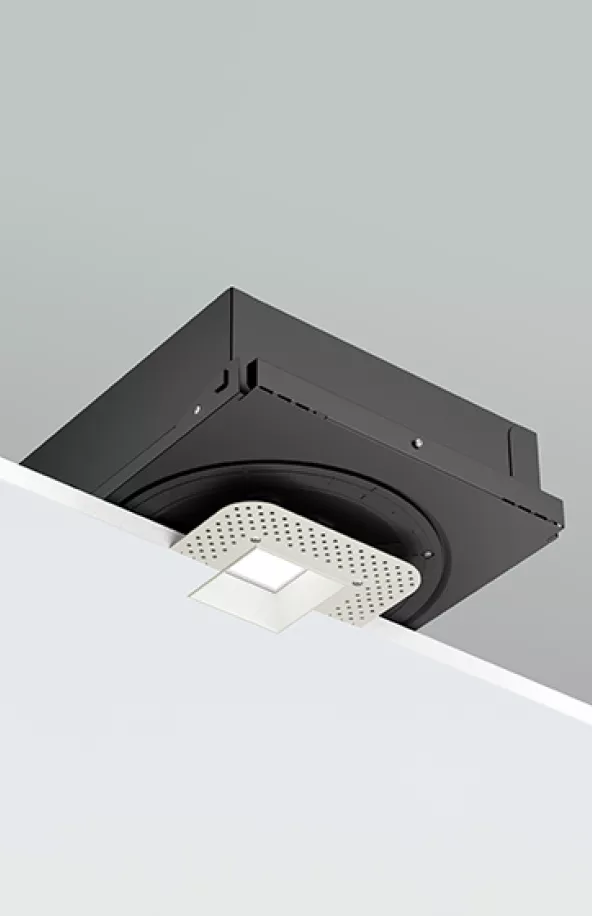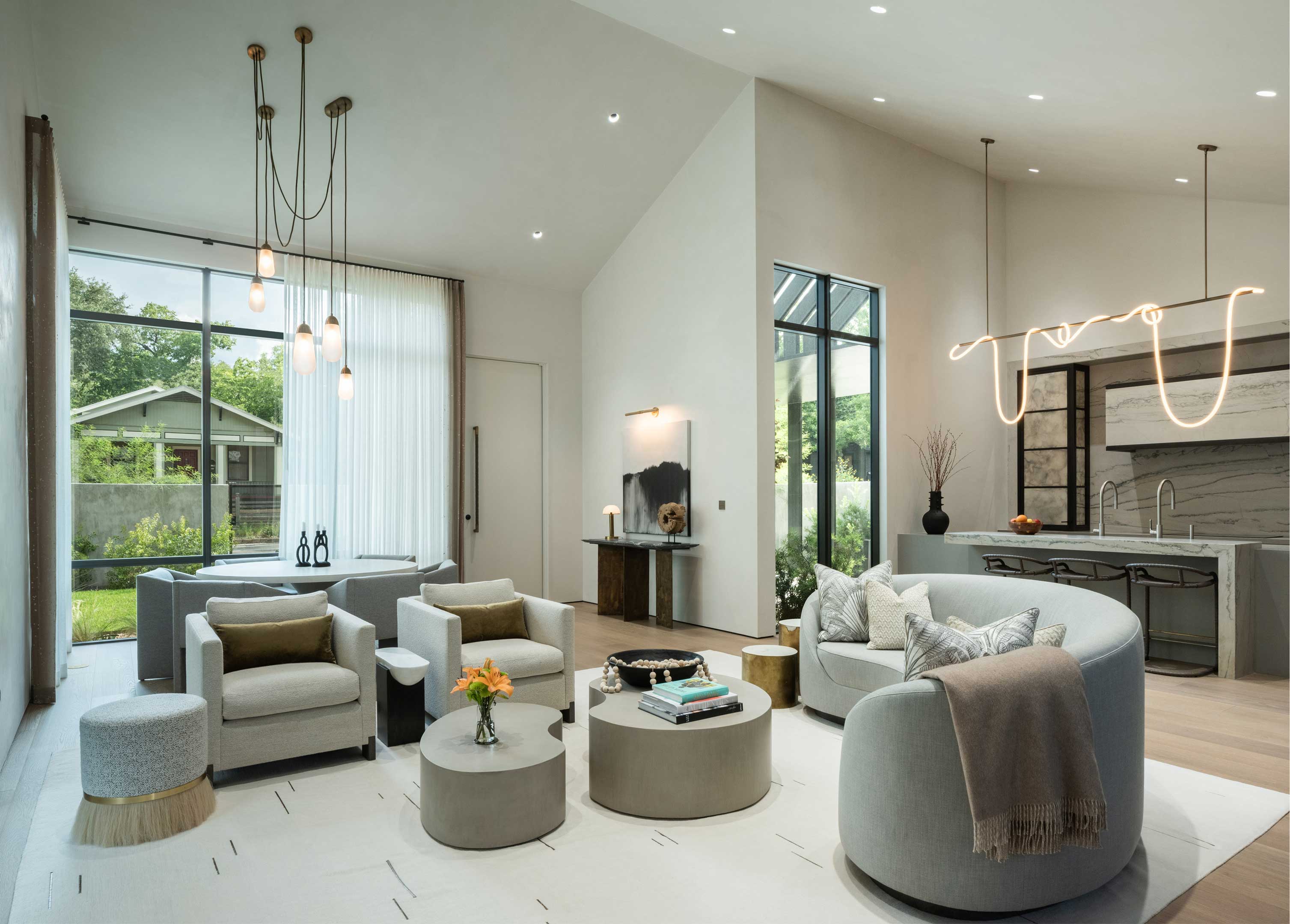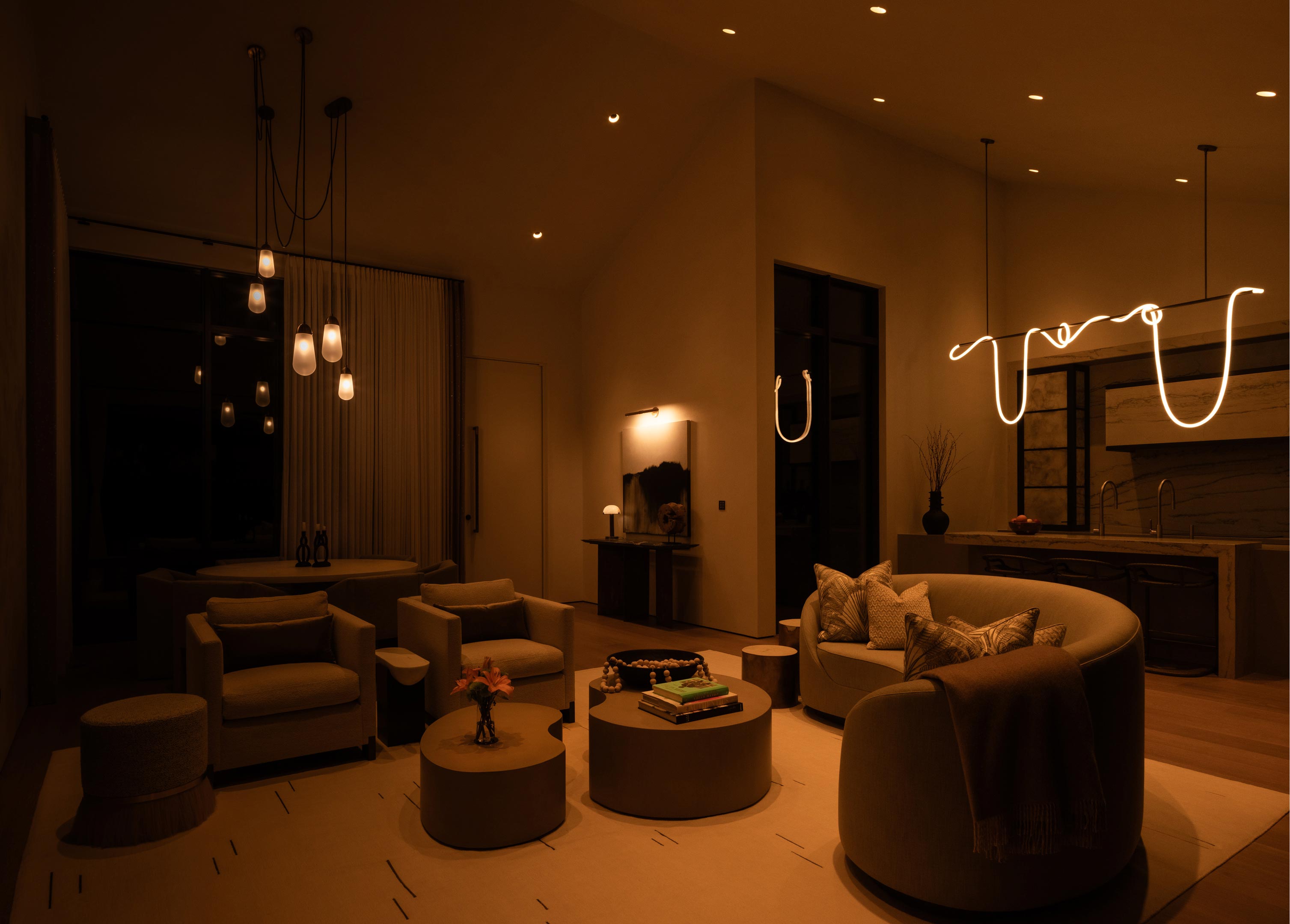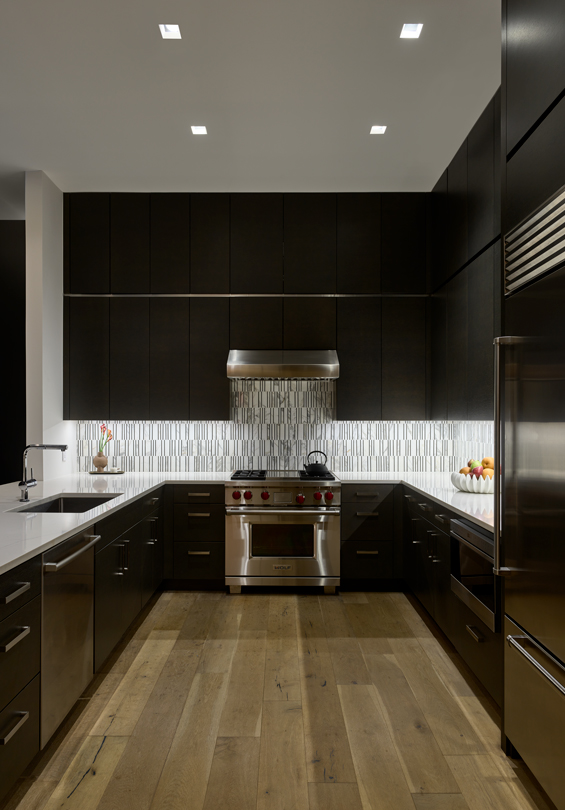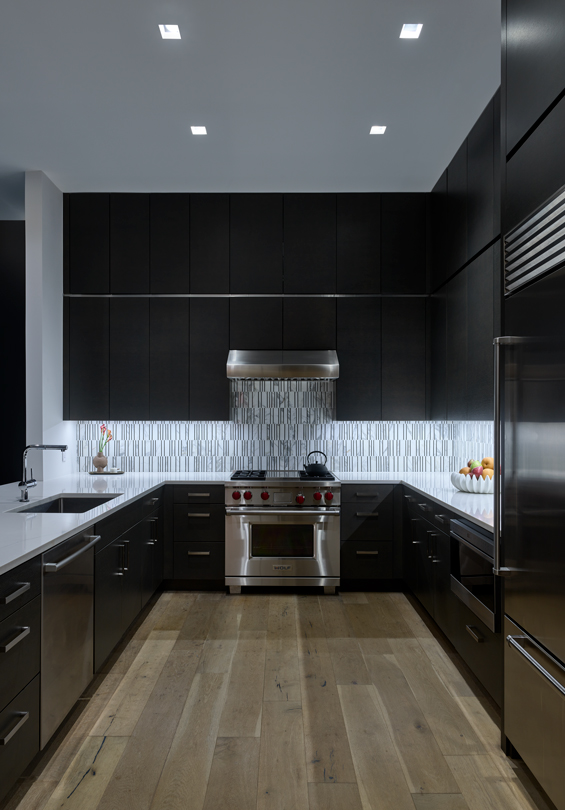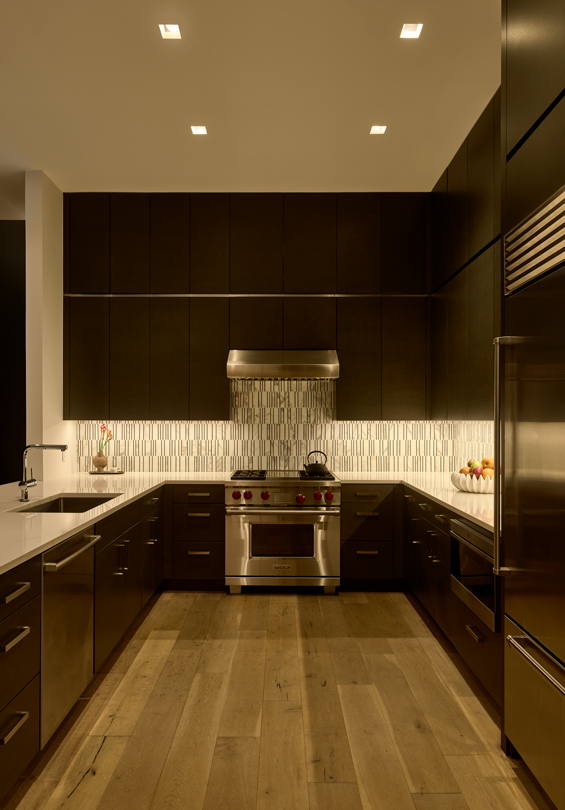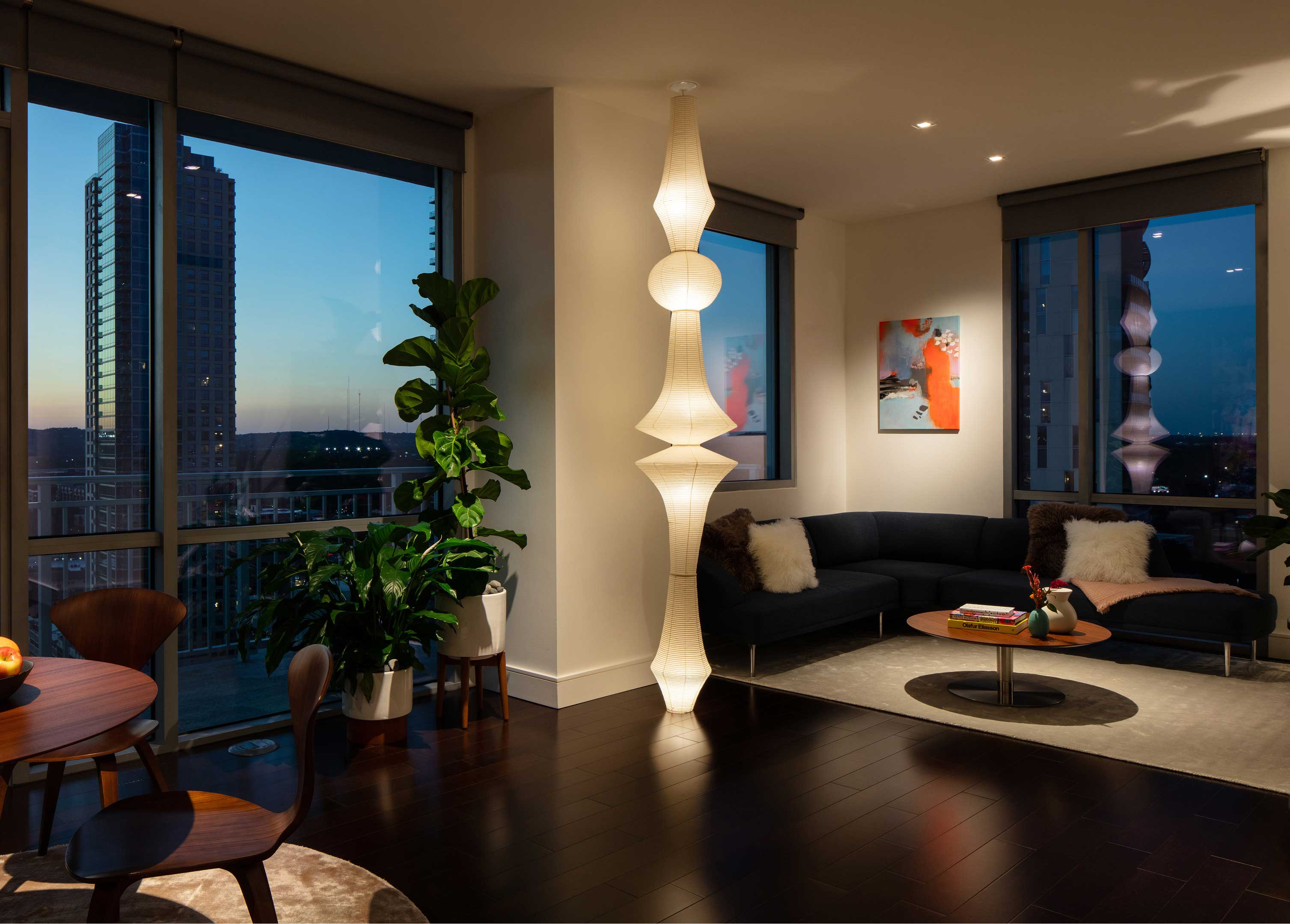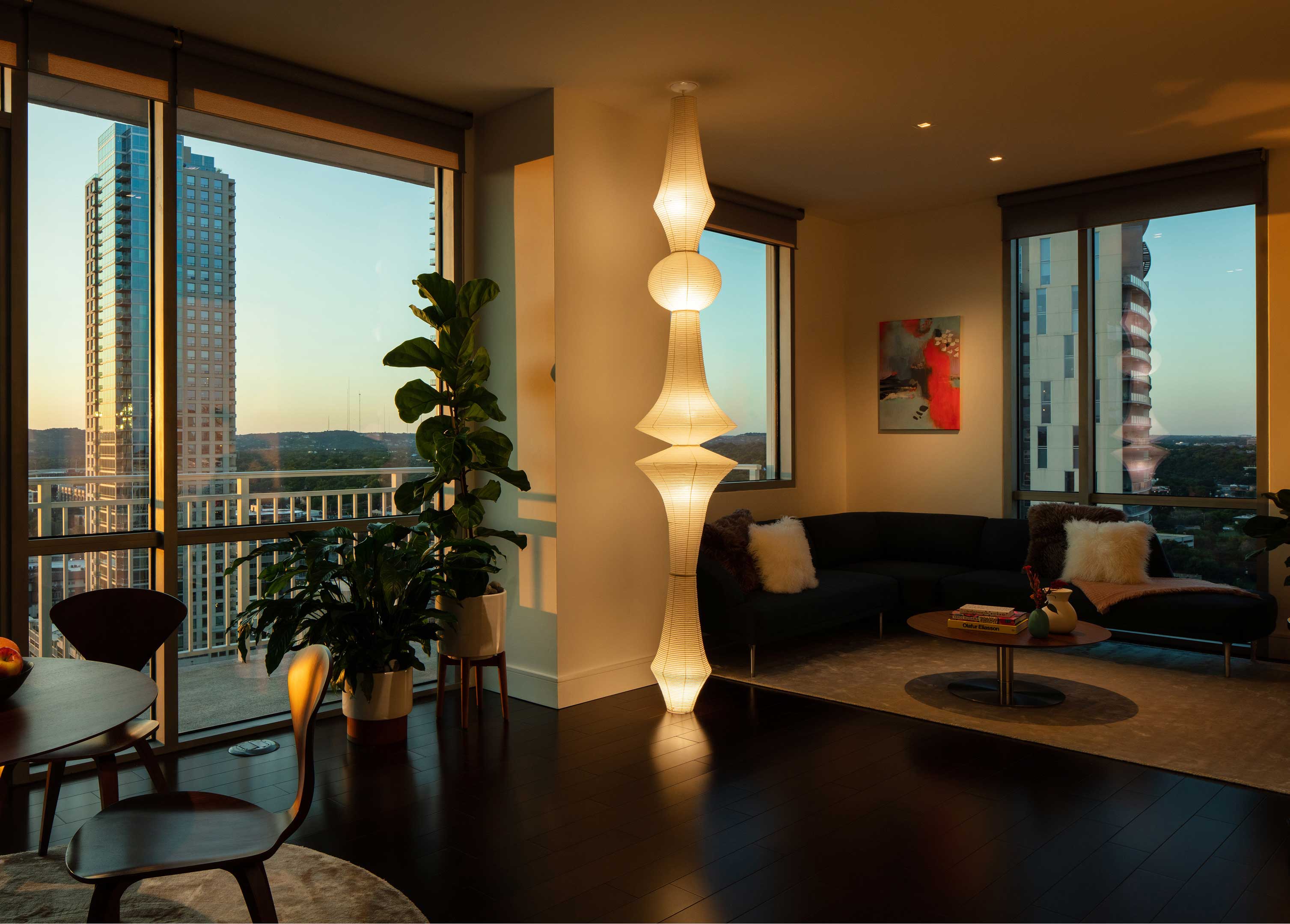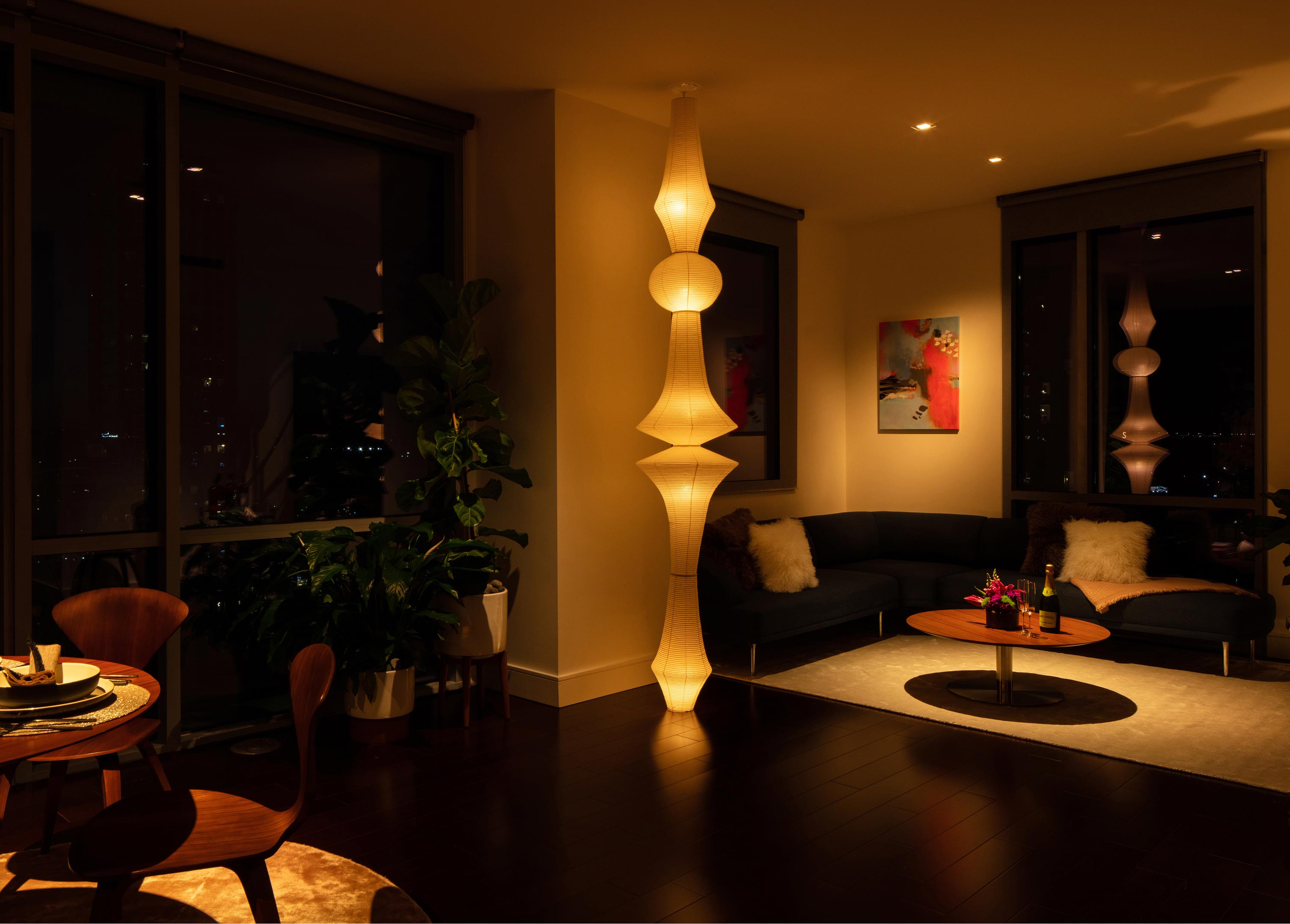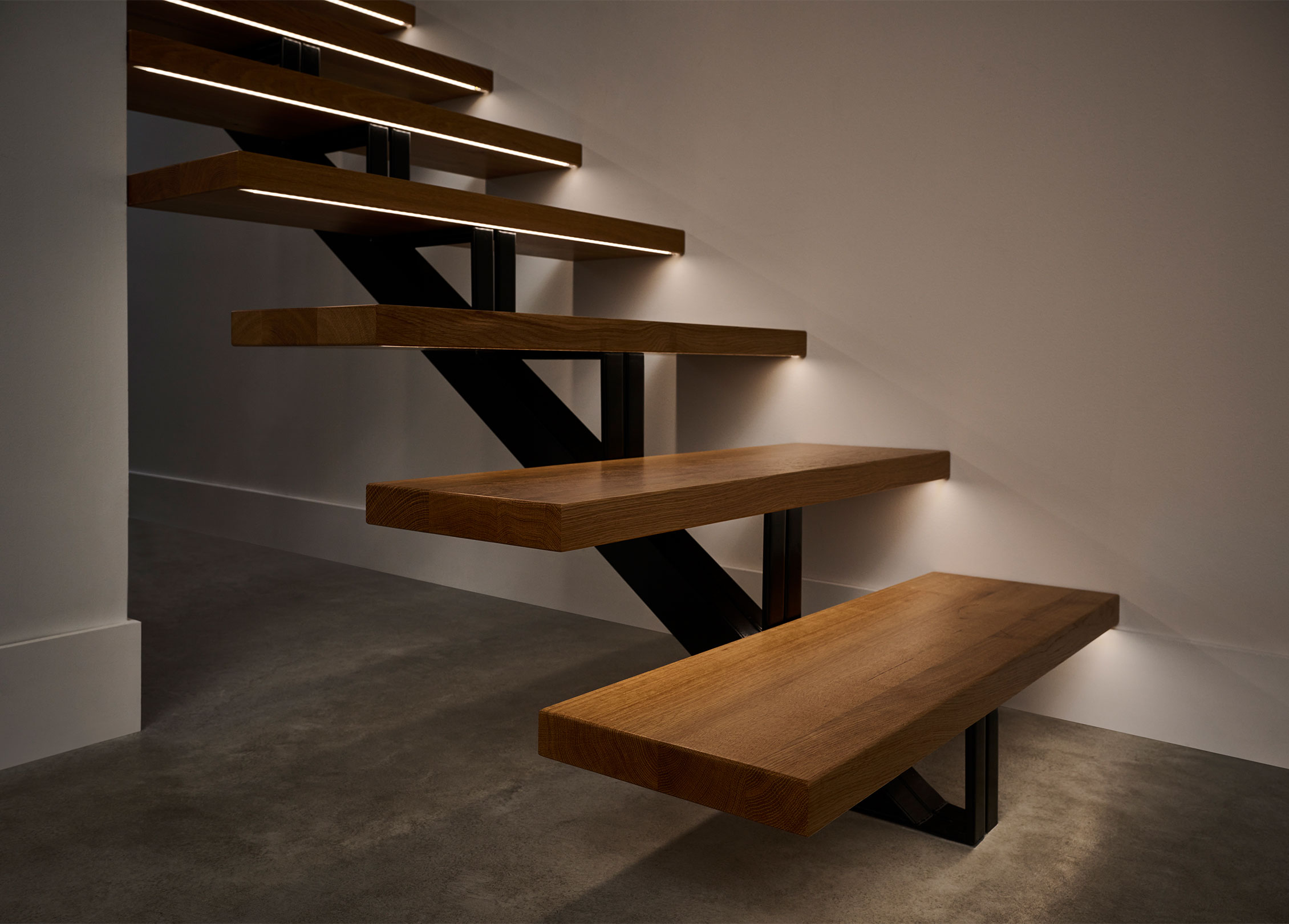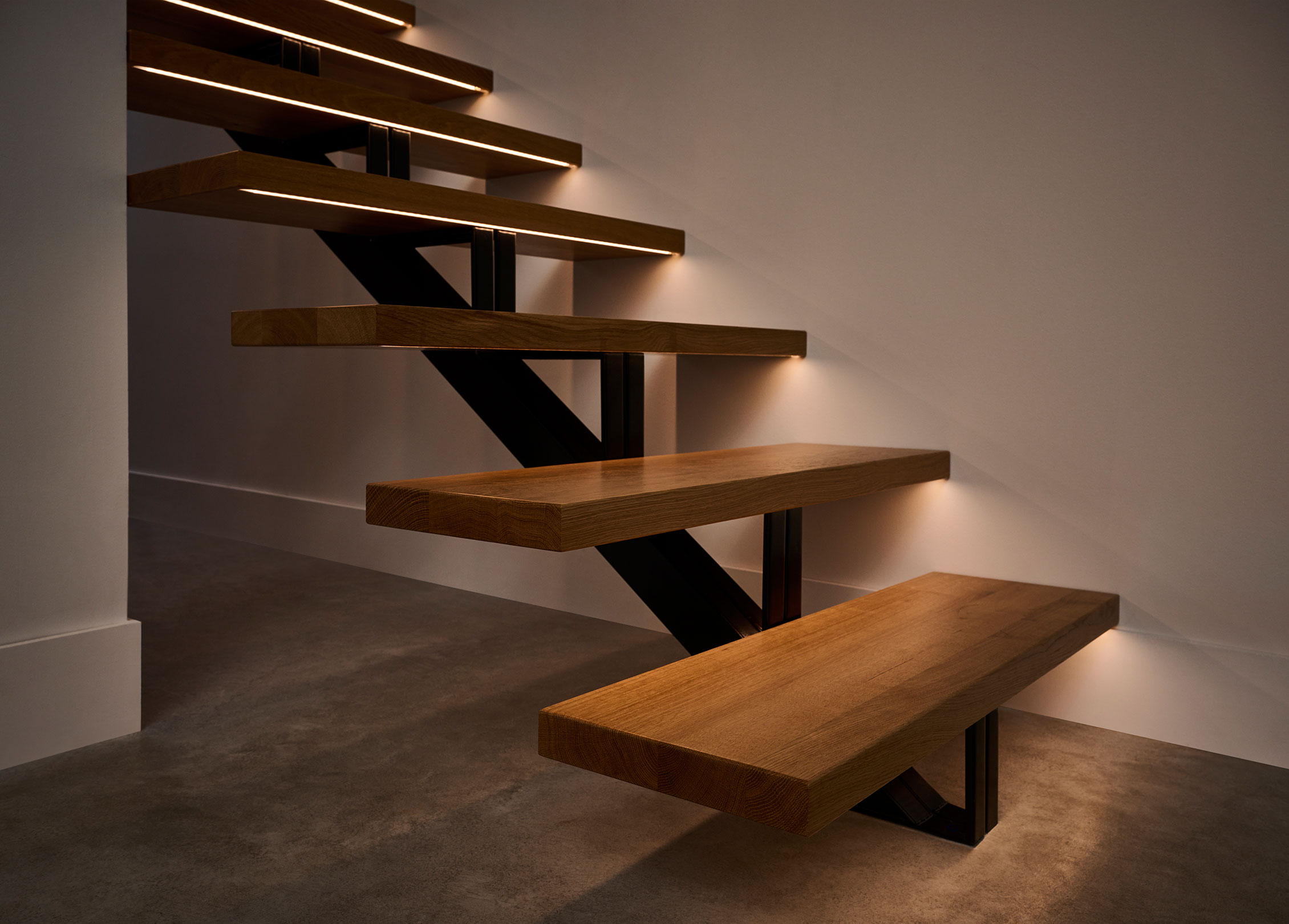How to Specify Color Temperature with Different Types of LED Light
April 2, 2025
Light shapes our experience of space. It lends texture, enhances mood, conceals flaws, and reveals the character of a space. Think about the enchantment of sitting around a campfire at dusk or the clear-headed feeling of drinking your morning coffee outside.
Author
Lutron
Date
04.02.25
Read
30 minutes
30 Min
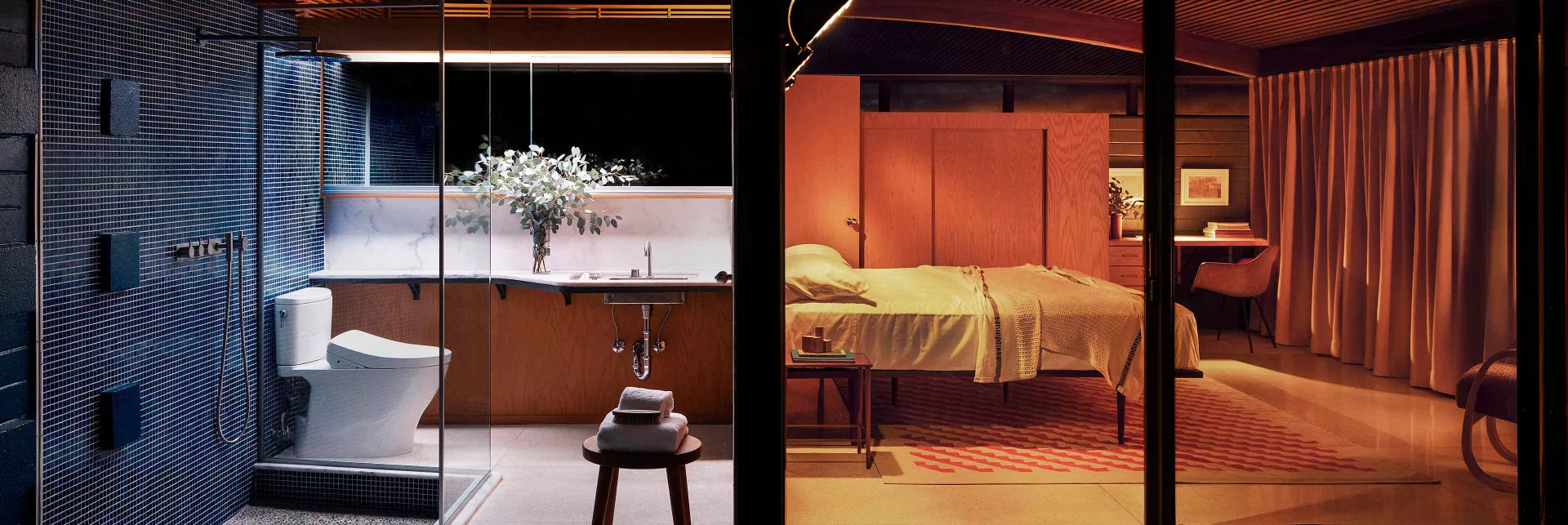
As LED technology continues to improve, it supports a broader range of aesthetic and performance goals, empowering designers with an expansive lighting palette to "paint" the space.
This article focuses on an important—and transformative—tool designers have at their disposal: the ability to tune the Correlated Color Temperature (CCT) of electric light. A brief introduction to the connection between CCT and LED lighting will help define the various strategies, products, and applications we can use to deliver remarkable quality of light for specific projects.
What is Correlated Color Temperature (CCT)?
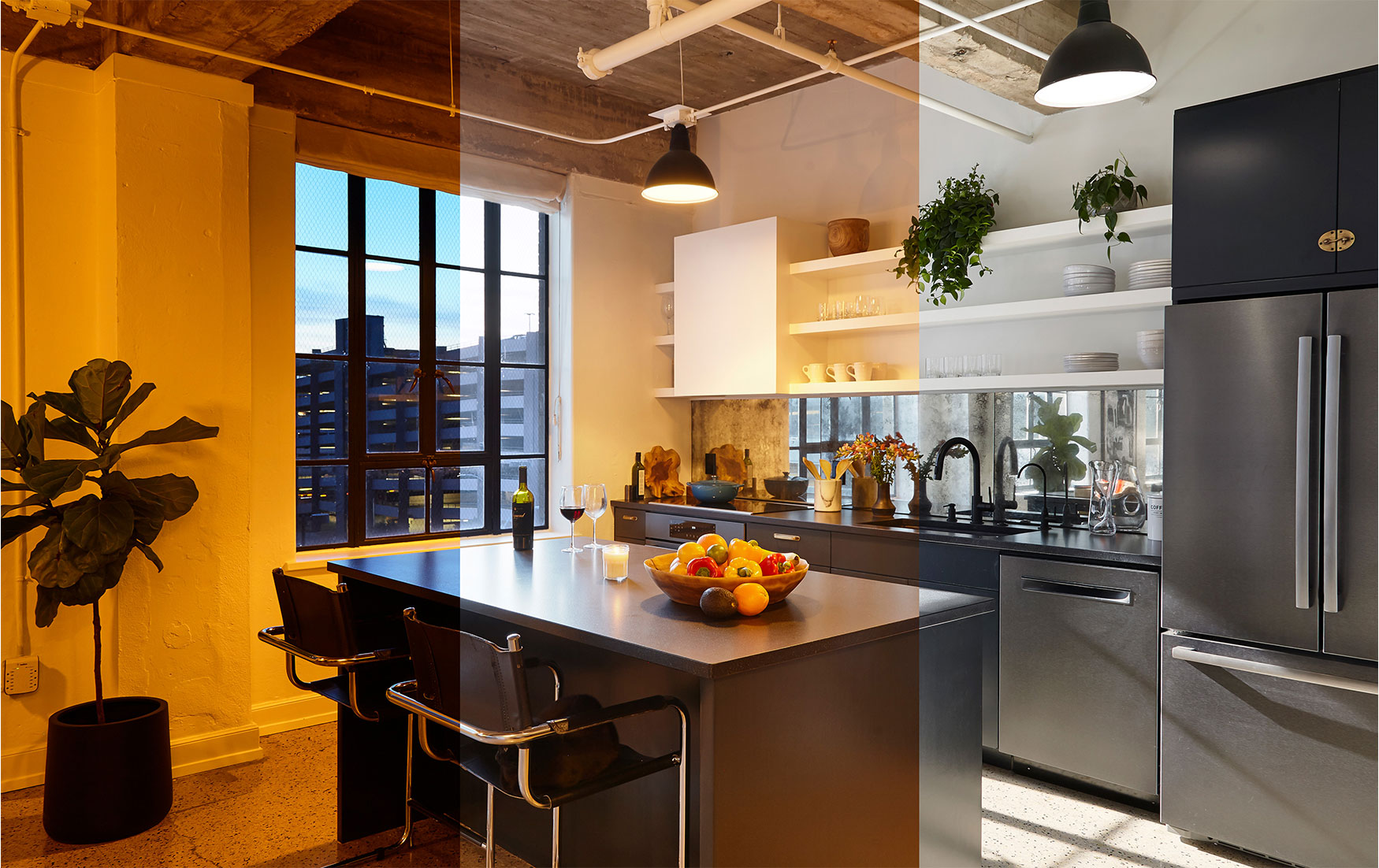
By leveraging the benefits of correlated color temperature, full-spectrum light sources can faithfully replicate natural light shifts throughout the day.
Light and heat are closely related in nature, and their interaction helps explain why a specific light source––sun, fire, moon, or stars––looks and feels the way it does at a given time. Manufactured light is best when it most faithfully replicates the color of nature's work. CCT, measured in degrees Kelvin (K), is a useful shorthand for describing the color appearance of this light following the spectrum from warm (1400K-2700K) to cool (3000K-4500K) to very cool (5000K-6500K+). As the temperature increases, the light appears cooler and more blue-white in color.
In practical terms, think of the embers in a campfire, incandescent bulbs, or the flicker of candlelight as examples of warm light. Cool light conjures the crisp blue of an arctic sky, with neutral color temperatures providing a familar, bright white in kitchens, home offices, or task lighting. As these examples illustrate, the importance of CCT isn't just that it describes how light color looks; it also suggests the range of practical and emotional associations, allowing light to feel calm or energizing, cozy or formal, relaxed or engaged.
Understanding and leveraging the benefits of CCT allows architects and interior designers to create visually striking environments that support well-being, productivity, and the unique character of each project.
Key Terms: Five Types of LED Light
Color temperature is one part of the lighting design equation. Lighting type is the other. Together, they offer lighting that supports a client’s design, budget, and performance requirements. It's common to mix lighting types throughout a project to deliver appropriate lighting for each space and application.
1. Static White LED Light
Static white LEDs operate at a single, unchanging color temperature regardless of the lighting intensity, but as the light is dimmed, it may appear grayish and dull. In contrast, incandescent and halogen lights are dimmed by reducing the electrical current to the filament, resulting in a warmer color appearance at lower intensities, an effect replicated by warm-dim LEDs.
Cost-effective and widely available, static white LED lighting is often used throughout the home but is best suited to functional work areas with limited occupancy time. In these applications, budget and efficiency are likely design priorities. Static white offers no flexibility with respect to CCT, making it unsuitable in situations that require varying color temperatures at different times.
2. Warm Dim LED Light
Warm-dim, also called dim-to-warm lighting, is most associated with the familiar color shift of an incandescent lamp as it's adjusted. At full output, an incandescent filament glows white hot, around 2700K to 3000K, and dimming produces a warmer, more amber glow (1400K to 2400K). Warm-dim LEDs mix two or more LEDs of different colors to emulate the characteristic warmth of incandescent bulbs for cozy, comfortable, or even romantic light.
Design Tip - Warm dim lamps feature a variety of color ranges. Before specifying warm-dim LEDs, confirm the lamp's dimming capability and range to ensure it can deliver the color temperatures you're looking for.
3. Tunable White Light
Tunable white LEDs allow you to individually adjust the color temperature across the broad white light spectrum (usually between 2700K and 6500K), and the lighting intensity to achieve human-centric, dynamic white control. Adjust lighting throughout the day, reflect a preferred mood or ambiance, and enhance personal comfort in almost any space.
The ability to interface with advanced control technology begins with tunable white lighting. Designers can specify smart, wireless, tunable white LEDs with confidence, knowing that changes to system programming are software-driven; adjustments can be made at any time with no impact on system or fixture wiring.
Barriers to implementation are typically cost and installation complexity, although the latter is becoming less significant as digital, wireless controls become more commonplace.
Design Tip - When specifying tunable white fixtures, confirm CCT range and high CRI (above 90) to ensure accurate color rendering. In addition, establish that the fixture assures a dimming range down to 1% or less, and will be compatible with a wide range of control protocols and advanced control systems.
4. RGB and Tunable White Light
RGBW and RGB + tunable white lighting uses red, green, blue, and white LEDs to produce a wide range of colors and whites desirable in luxury homes, hospitality projects, and other spaces where the option to add a pop of color enhances the ambiance, inspires creativity, and delivers captivating visuals.
While RGBW fixtures provide a wide range of RGB colors and dynamic white light, installation and programming can be complicated. For clients looking for the highest color rendering and quality of light, only full-spectrum LEDs can authentically replicate nuances of natural daylight
Lutron's RGB+ tunable white solutions take the wow factor to the next level with a five-channel technology, native to Lutron control systems, that offers rich, saturated color and full tunable white range from 1800K to 4000K. Explore Lutron's luxury residential LED lighting.
Design Tip - Professionals often cite the ability to specify CCT and pops of saturated color as lighting features frequently requested by their clients. Lutron Lumaris RGB + tunable white tape light solutions make it easy to install layers of light under cabinets, in coves, around vanities,
5. Full-Spectrum Light
Full-spectrum light represents the zenith of current lighting technology. It delivers faithful color rendering and possesses the unique ability to mimic natural light with stunning accuracy across the visible spectrum. Simply put, full-spectrum sources come closest to the light produced in nature.
Lutron's Ketra full spectrum lighting provides the highest quality of light available from a manufactured light source. It inspires creativity, maximizes the feeling of natural light, and seamlessly harmonizes interiors with the rhythms of the world outside. Lighting can be infinitely personalized or programmed to respond automatically to location, time of day, or other system settings.
Design Tip - It is common to mix and match technologies to achieve the right level of control and impact. To meet both budget and design goals, full-spectrum options may be reserved for a project's signature or statement spaces.
What's next in lighting technology
As LED technology expands the realm of possibility, expectations will grow in kind. People will demand more—dynamic designs, seamless integration with building systems, captivating effects, and solutions that prioritize human-centric experiences. Light will be recognized as a material of beauty, and the highest quality lighting will be in high demand—to elevate design and enrich lives, make spaces and moments more personal, and make control systems more intuitive.
The key to all this possibility is seamless integration and native system intelligence.
Lutron is at the forefront of lighting integration, combining intelligent lighting like Ketra, Rania, and Lumaris with advanced control systems, such as HomeWorks, Athena, and myRoom XC, paving the way for adaptable lighting that is easy to specify, simple to use, and will continue to improve over time through cloud connectivity.
The line between lighting design and spatial design continues to blur as design professionals have access to an ever-expanding toolkit. Understanding the nuances of CCT and types of LED lighting will help you deliver visually stunning designs that support comfort and well-being for your clients. The ability to tune LEDs—their color, intensity, and distribution—will become an increasingly foundational part of the design for the built environment.
Get design support.
Consult with a Lutron residential specification specialist today and learn how Lutron can help you craft elevated experiences with light on your next project.
